The Pilgrimage of Ravioli Along the Silk Road, from China All The Way to Rome
Ravioli are the only pasta shape common to many parts of the world, even very far from each other. We are talking about 56 nations united by the routes of the Silk Road that, through the centuries and thanks to the different routes, brought a simple jiaozi from Beijing to Rome.
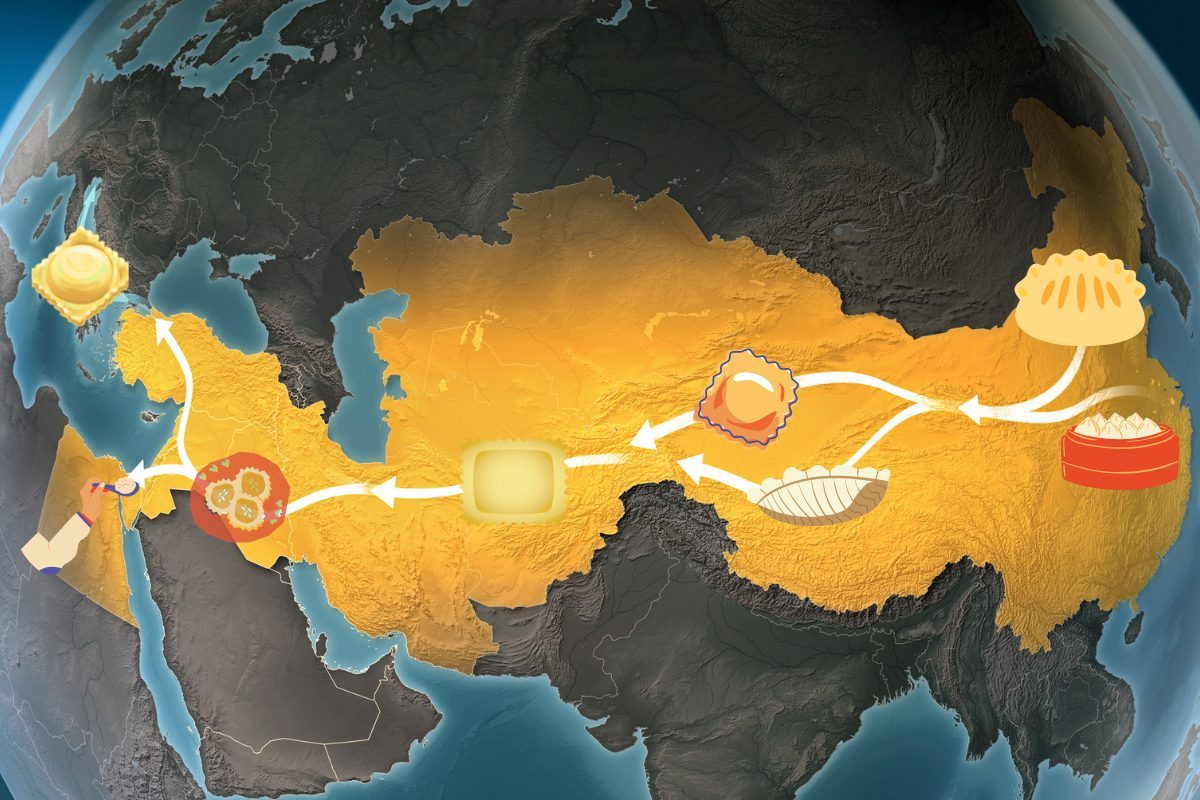;Resize,width=742;)
Is it possible that a gastronomic tradition became important throughout the world thanks to a trade route? Yes, if we are talking about the most important trade route in history: the Silk Road and its ravioli. After all, it is only a thin pasta shell but this shell can contain a whole world of fillings: ravioli are the only pasta dish common throughout the "Old World", the one known until 1492.
The number and type of participants in a hypothetical "world championship" of ravioli shows that there is no culture that has not created its own style in designing a sheet of pasta, closing it, cooking it and filling it. The really interesting thing about the history of ravioli around the world is that, it seems, they trace a very precise path that has had enormous implications in the course of human events: the origin of ravioli can be followed step by step along the Silk Road.
The History of Ravioli: The Favorite Pasta of the Middle Ages
We are used to thinking that stuffed pasta is typical of traditional and regional Italian cuisine, but in reality it is very widespread throughout the world, despite having different names and characteristics. With "ravioli" we can unite all those categories of stuffed pasta, both sweet and savory, prepared with different casings. Depending on the cuisines of the world, the content of the ravioli changes: we can find meat, fish, cheese, vegetables or fruit; the condiments also change, the cooking methods (with boiling, steaming, frying); even the plating and serving methods change.
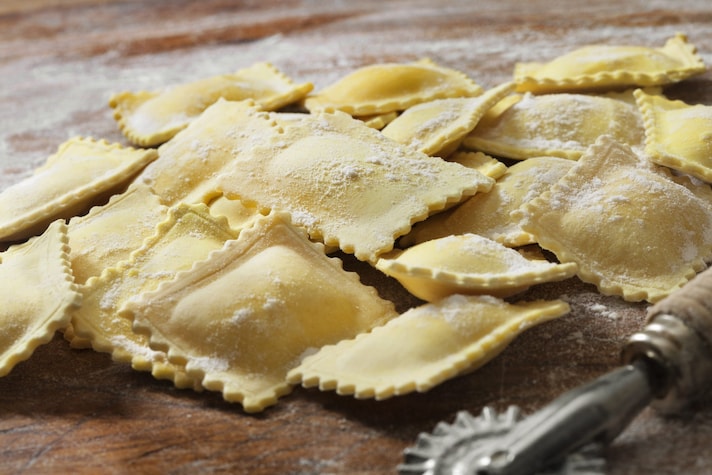
The first important testimonies date back to the Middle Ages: Giovanni Boccaccio, a great gourmand, also mentions them in the Decameron, demonstrating the widespread use of the dish at that time. It seems that the first appearance dates back to 1100, but there are different hypotheses: Apicius mentions a sort of "cake" very similar to a giant ravioli, although many historians believe it was just a dough in the shape of a cooked egg, served in broth. It is certain that this is the only stuffed pasta we have news of today, dating back to the 12th and 13th centuries, and that they were found in 1100 in the home of a feudal lord in Savona. It is no coincidence that this type of pasta has its Italian origins in Liguria: around 1200, this culture began to spread throughout the country from Genoa, thanks to the maritime trade of the capital and the land trade towards the Grand Duchy of Parma. In the Emilia-Romagna area they also arrive from the other outlet to the sea, that is Venice, arriving here thanks to the Silk Road.
With this name we indicate all the land, sea and river itineraries of about 8000 kilometers along which since ancient times the cultural and commercial exchanges between East and West have taken place and, in particular, of silk of which China maintained the monopoly for centuries. Although it is linked to the world of Marco Polo described in the Milione, it is important to underline that this type of commercial exchange has been active since 200 BC and that the final destination of the raw material and other precious Chinese materials has always and only been Rome. Many goods have also made the reverse journey and together with the goods, ideas and thoughts have traveled on this route: the development of mathematics, astronomy, theology and, why not, gastronomy. For these reasons it is no coincidence that ravioli have found solid development in the nations that have been touched by these viaducts.
1. The House of Ravioli: the Far East
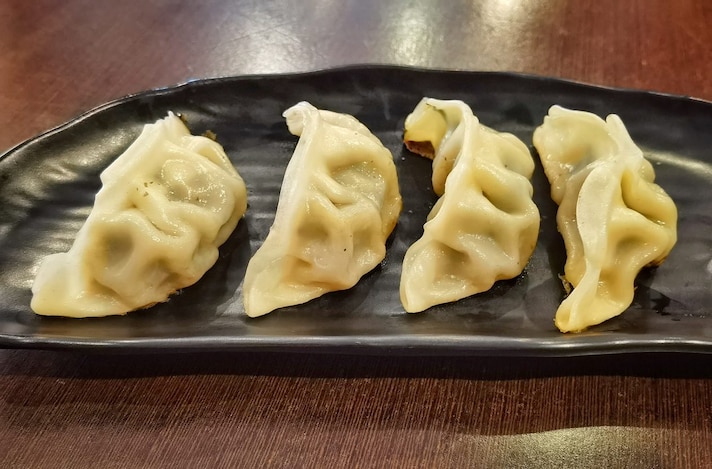
Where to start if not from China? The nation that gave birth to Yao Ming has two varieties of ravioli: wanton and jiaozi. The former in turn have countless varieties: they can be fried or steamed, filled with pork, shrimp or vegetables; depending on the area they are served in noodle soups, with chicken broth, fried, with sauces, cold or hot. We must remember that Chinese cuisine has a great value in common with our tradition: it has a very broad regional cuisine: in China we can find many types of ravioli, depending on the city. In addition to wanton we also find jiaozi, smaller parcels to be steamed, boiled or fried. The dough is thinner than wanton and the edges are delicately sealed by hand. Again, there are many regional variations but the most common ones contain ground beef and vegetables.

The first coast touched by the Maritime Silk Road is that of Japan and in fact here we find gyoza, the Japanese ravioli par excellence. The origin is undoubtedly Chinese and in fact the term "gyoza" is a transliteration of "jiaozi": they are also very similar except for the strong garlic flavor and the delicate salt or soy flavor that we find in the version of the Land of the Rising Sun. They are always served with soy sauce to which is added a rice vinegar and rāyu, a sesame oil common to the entire Far East made with a very spicy chili pepper. Usually the shape of gyoza is crescent and contains a filling of minced pork, green onions, cabbage, garlic and ginger.
Between China and Japan there is the so-called "third way", that of Korea: mantou are typical steamed ravioli, descendants of the Chinese mantou that today we see in a dry version (it is the famous "Chinese bread") but which was originally stuffed. Korean mantou have many types of seasoning: a vegetarian version contains only kimchi, we can also find pork, beef, tofu or other vegetables. These ravioli are also closely "related" to the Central Asian manti thanks to the terrestrial Silk Road.
2. Dumplings in Southeast Asia
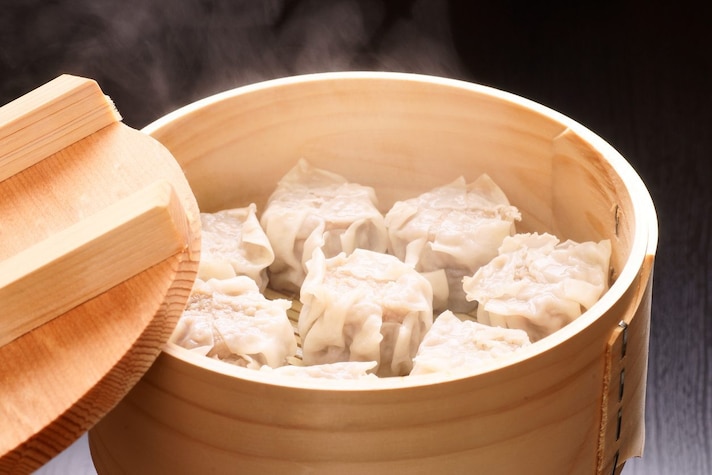
Another fundamental viaticum of the maritime route are the islands of the archipelago that divide Asia from Oceania. The main arrival point is Java, the heart of Indonesia, the most populous and economically developed part. Here we find siomay, the protagonists of Indonesian street food: steamed fish ravioli served with peanut butter. The filling contains a mixture of unspecified fish products, potatoes, cabbage, hard-boiled eggs, tofu and a particular variety of rather bitter pumpkin. The influence of China is so strong that inside Indonesian Chinatowns there are "Chinese-style" siomay with meat and a sweet and sour and spicy sauce instead of peanut butter.
The development of ravioli in Vietnam is also very interesting, having become a true national dish: Mì Hoành Thánh is a soup with noodles and ravioli of Chinese origin, exported by Chinese emigrants. Usually prepared with a pork broth, the wonton filling contains spring onions, chives, meat and many spices.
3. Dumplings in Central Asia: Between India and the Former Soviet Republics
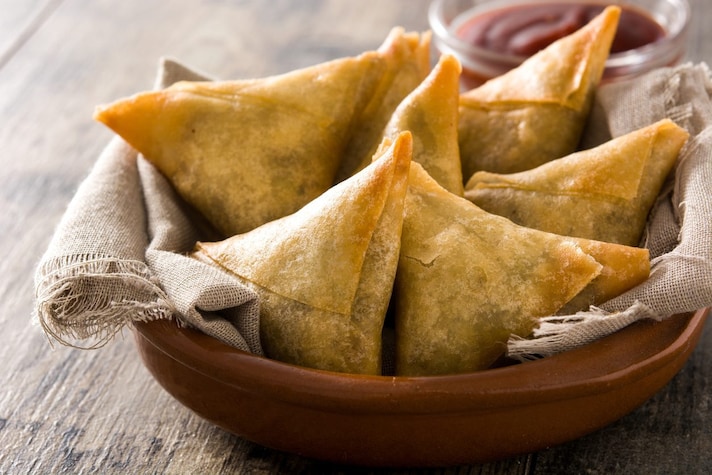
The main historical route of the Silk Road remains the land one and from Beijing the goods move towards Central Asia. The first ravioli we find here are those of Nepal, the momos, prepared with sesame dough and stuffed with yak, the iconic Tibetan bovine.
To the north, in Mongolia, there are buuz, enormous ravioli filled with mutton, onion, garlic and spices, which are steamed and eaten with salads and fried bread. A typical Mongolian dish, it is not difficult to find it with potatoes, cabbage or rice instead of meat. Buuz owe their name to the Chinese baozi and are also common in the easternmost part of Siberia, where it is customary to eat them with vodka.
From north to south we enter the most "densely populated" area of ravioli: India and the former Soviet republics. In this precise area of the world, practically all the Silk Roads, namely land, river and sea, have intertwined. It should not be surprising that in this very position an enormous variety of ravioli is concentrated, which often and willingly have the same origins and recipes, but different names.
Let's start with the samosa, the most famous, common in India, Pakistan and Somalia (arrived by sea): a triangular ravioli of fried or baked dough, stuffed with potatoes, onions, peas, lentils, cheese, beef or chicken and various local spices such as chilli or coriander. A delicacy that is often accompanied with tamarind chutney or curd. The fame of the samosa is due to the ease of the recipe and the period of colonialism: with the Silk Road this specific tradition arrived but it was the British Empire that brought it around the world.
We find varieties of samosa in Congo, Kenya, Sudan, Uganda, Eritrea, Nigeria, Mozambique in Africa, in Greece and Cyprus in Europe and even in Turkey and the Middle East. The historic rivalry between the British Empire and Russia was also played out on ravioli and in fact many former Soviet republics in this nerve center of trade have native varieties of samosa and other ravioli:
- the samboosa in Tajikistan and the sambosa in Afghanistan are practically the same as the Indian ones, which arrived here due to the war between Russia and the United Kingdom;
- In Uzbekistan, Kyrgyzstan, and Kazakhstan they are prepared with meat or pumpkin and called samsa.
Samosas never arrived in Russia, but the country has its own ravioli, much more similar to Italian tortellino: pel'meni, a very thin pastry filled with minced pork, lamb, beef or other animals found in the harsh Siberian winters. The traditional Ural recipe calls for 45% beef, 35% lamb and 20% pork for the filling. Other ingredients such as pepper, onion and garlic are often mixed with the filling.
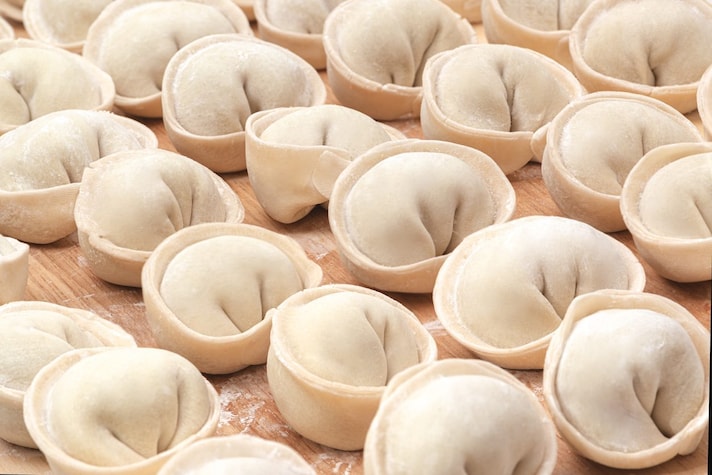
The folkloristic characteristic of this pasta is that, in all likelihood, it is the first "frozen" dish in the history of man: it was tradition to prepare them fresh and leave them to freeze outside the window of the house to then be defrosted in the summer before use. Also typical of all the Baltic republics and Ukraine (which claims paternity), they also have another very curious characteristic: the similarity with Italian fresh pasta is such that today, for industrial production, the machines used for tortelloni are purchased from Italian factories.
4. Ravioli in the Caucasus and the Middle East
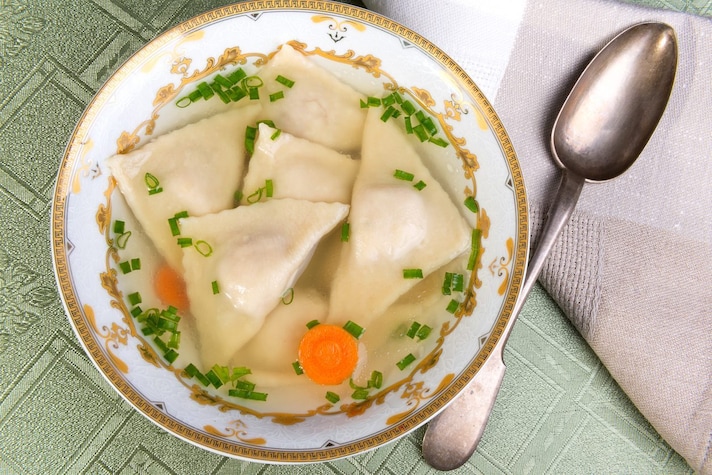
Throughout the Middle East there are dozens and dozens of variations of ravioli filled with onion and minced meat, spiced with nutmeg and cinnamon, which are then fried. The area is squeezed between the land Silk Road (with Persia being one of the most important nations in this type of trade) and the sea. With the opening of the Suez Canal in 1869 all the coasts have benefited from a succession of people who have enormously enriched the local culture: in practice every area of these territories has stuffed pasta as a typical national dish.
In Palestine we find kreplach, small ravioli filled with minced meat, potatoes or other vegetables, served in chicken broth or fried. The traditional dough is made of flour, water and eggs and must be very thin. They are usually eaten on the occasion of Rosh Hashanah, the Jewish New Year, before the fasting period of Yom Kippur: in this case the filling must be cheese or meat, never both, because kreplach must follow the dictates of kosher cuisine.
Egyptian sambousek also derive from these ravioli , a fried crescent-shaped variant that extends its tradition to all of Mediterranean Africa, Oman, Jordan and Saudi Arabia. Since all of these countries are culturally linked to Islam, pork is completely banned and is replaced by lamb or, in a vegetarian version, by potatoes, peas, lentils, cheese and various spices. In Lebanon and Iran, versions with local fish are very popular, truly exquisite. This version of ravioli is also very important for Italian tradition: at the beginning of the 19th century, the first culurgiones began to appear in Sardinia and, according to historical findings, they were actually children of sambousek.
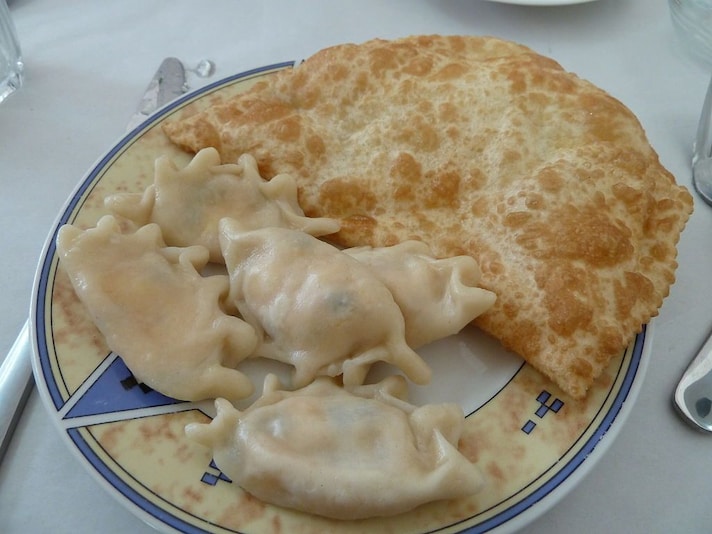
By Deror:avi – Own work, CC BY–SA 3.0
On the other side of the Suez Canal is Turkey and the entire Caucasus region that is home to the Circassians, an ethnic group that occupies a region historically disputed by the Ottoman Empire and the Russians. Typical of this area are mataz, elongated ravioli made of beef or lamb together with vegetables, onions and a mix of spices. Mataz are not the only ravioli in the area: khinkali are a delicacy, a traditional dish in Georgia that has also spread to Turkey and Armenia due to geographical proximity and to Ukraine, Russia, Moldova and the United States due to the strong migratory flows that have affected this country after 1990. Kinkhali are ravioli filled with minced meat and spices, seasoned with black pepper on the surface; they must be eaten strictly with your hands for a technical reason: if you pierce them with a fork they would lose the internal juice, the tastiest and most characteristic ingredient of the dish. To eat these ravioli you have to take a bite and drink the juice from the hole that is created, after which you can finish the dish.
5. Ravioli Crosses the Urals: Scandinavia, Poland and Former Yugoslavia
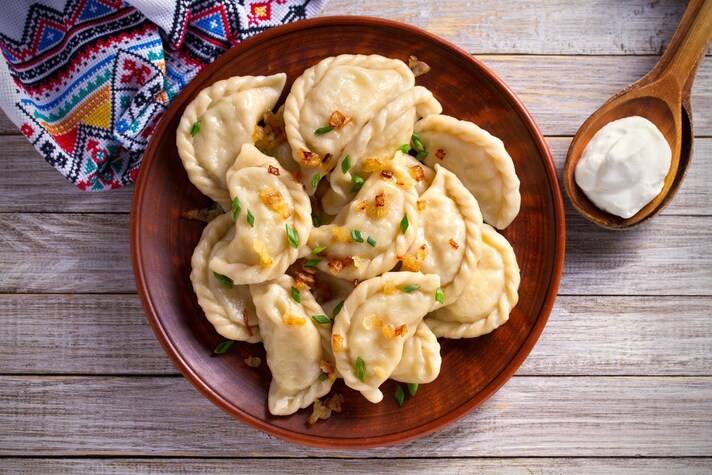
The Silk Road never reached Sweden, we know that very well, but Scandinavia has always had close relations with St. Petersburg. From old Leningrad came some delicious and slightly obsolete ravioli, which are now only found in old restaurants in Sweden and Finland: blodpalt, a sort of stuffed dumpling made from barley or rye flour, with grated raw potatoes and with the addition of blood to the mixture. A traditional poor dish, coming from a time when families carefully used all parts of animals to obtain enough food. The difference between Swedish and Finnish ravioli is in the filling: the former have bacon and are prepared with pig's blood, the latter use only reindeer blood and serve the blodpalt in soup.
In neighboring Poland we find pierogi, one of the most famous ravioli in the world with that iconic "braid": there are both a savoury version with cheese or potatoes, and a sweet version filled with jam; in both cases they are seasoned with plenty of butter and sour cream on the side. We also find pierogi in Germany, due to migration, and in Romania, Moldova, Hungary, Serbia, Slovenia and Slovakia.
The nations mentioned are not a coincidence: the goods of the Silk Road after the Urals took various routes in addition to the one to Rome and the best "highway" in Europe was the Danube River, the waterway that kisses the European capitals. In particular in Slovenia (at the time Yugoslavia) and in the old Czechoslovakia, ravioli found fertile ground. In Idrija, a town near Gorizia and on the border with Italy, you can find wonderful ravioli filled with potatoes that act as a "side dish" to meat dishes and are covered with stale bread crumbs; they take their name from the city that invented them and are called idrijski. The Danube in Bratislava, now Slovakia, has instead left a type of pasta that today we associate more with the Czech Republic: knedilky. This ravioli is shaped like a meatball, made with a potato or flour dough, steamed and served as a side dish to the meat so that it absorbs all the sauce. Also in this case there are sweet variations made with jam, in particular with apricots. These Czech ravioli have created a genre all their own: they are in fact "cousins" of the German knodel , the Jewish kneidel, the Lithuanian cepelinai and finally Italian canederli from Trentino Alto-Adige.
6. All Roads Lead to Rome
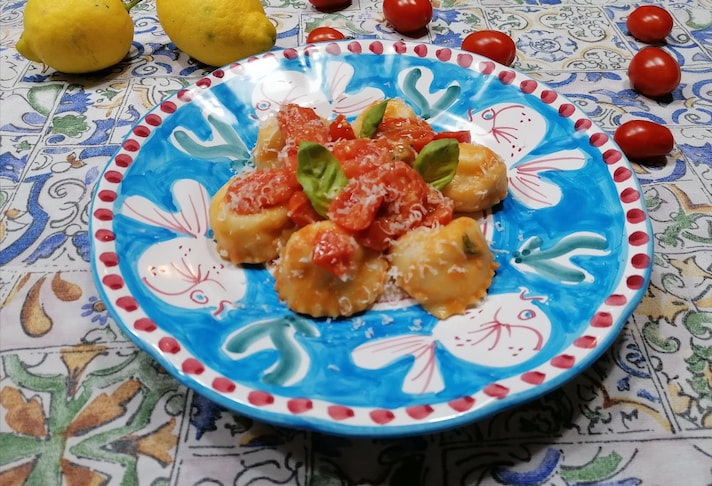
We finally arrive in Italy, the final stop on the Silk Road with the grandeur of Rome, the riches of the Vatican and the fundamental viaticum of Venice and Genoa first and foremost, two cities that have made naval trade a historical and international source of pride. The strength of these cities has brought an immeasurable gastronomic wealth to Italy and the internal exchanges between these locations (and the road taken to get there) have in turn created a sea of additional dishes. The most tangible, beautiful and poetic proof that we can see is certainly that of the Via Emilia, a road from 187 BC that today hosts dozens of sauces, condiments and fillings for the 36 different types of fresh pasta along the 165 kilometres that connect Rimini and Piacenza. On average, it makes a different type every 4 and a half kilometres, an obsession with pasta.
In addition to Emilia-Romagna, the region that is the symbol of stuffed pasta, we find different ravioli throughout the country: ricotta and spinach ravioli with nutmeg and black pepper found in the Marche, Tuscany and Lazio; sweet ricotta-filled ravioli in Abruzzo, the aforementioned culurgiones and ravioli capresi in Sardinia and Campania, and ricotta ravioli with pork sauce found in Sicily. An infinite number of dishes, an infinite number of possibilities, for a traditional gastronomy that has its origins in the most remote places on planet Earth.
;Resize,width=767;)

;Resize,width=712;)

